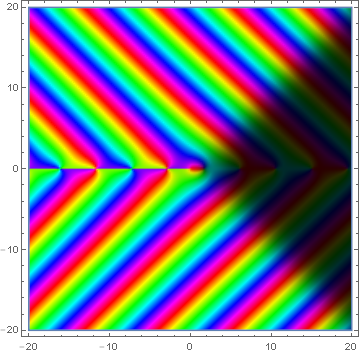Difference between revisions of "Kelvin ker"
From specialfunctionswiki
| Line 1: | Line 1: | ||
The $\mathrm{ker}_{\nu}$ function is defined as | The $\mathrm{ker}_{\nu}$ function is defined as | ||
| − | $$\mathrm{ | + | $$\mathrm{ker}_{\nu}(z)=\mathrm{Re} \left[ e^{-\frac{\nu \pi i}{2}} K_{\nu} \left( z e^{\frac{\pi i}{4}} \right) \right],$$ |
where $\mathrm{Re}$ denotes the [[real part]] of a [[complex number]] and $K_{\nu}$ denotes the [[Modified Bessel K sub nu|modified Bessel function $K_{\nu}$]]. | where $\mathrm{Re}$ denotes the [[real part]] of a [[complex number]] and $K_{\nu}$ denotes the [[Modified Bessel K sub nu|modified Bessel function $K_{\nu}$]]. | ||
Revision as of 03:30, 21 August 2015
The $\mathrm{ker}_{\nu}$ function is defined as $$\mathrm{ker}_{\nu}(z)=\mathrm{Re} \left[ e^{-\frac{\nu \pi i}{2}} K_{\nu} \left( z e^{\frac{\pi i}{4}} \right) \right],$$ where $\mathrm{Re}$ denotes the real part of a complex number and $K_{\nu}$ denotes the modified Bessel function $K_{\nu}$.
Domain coloring of $\mathrm{ker}_0$.
